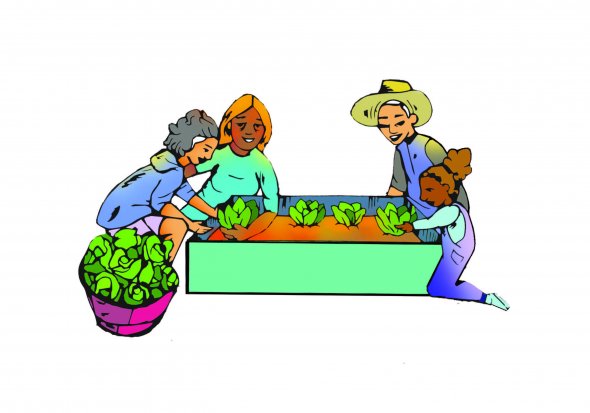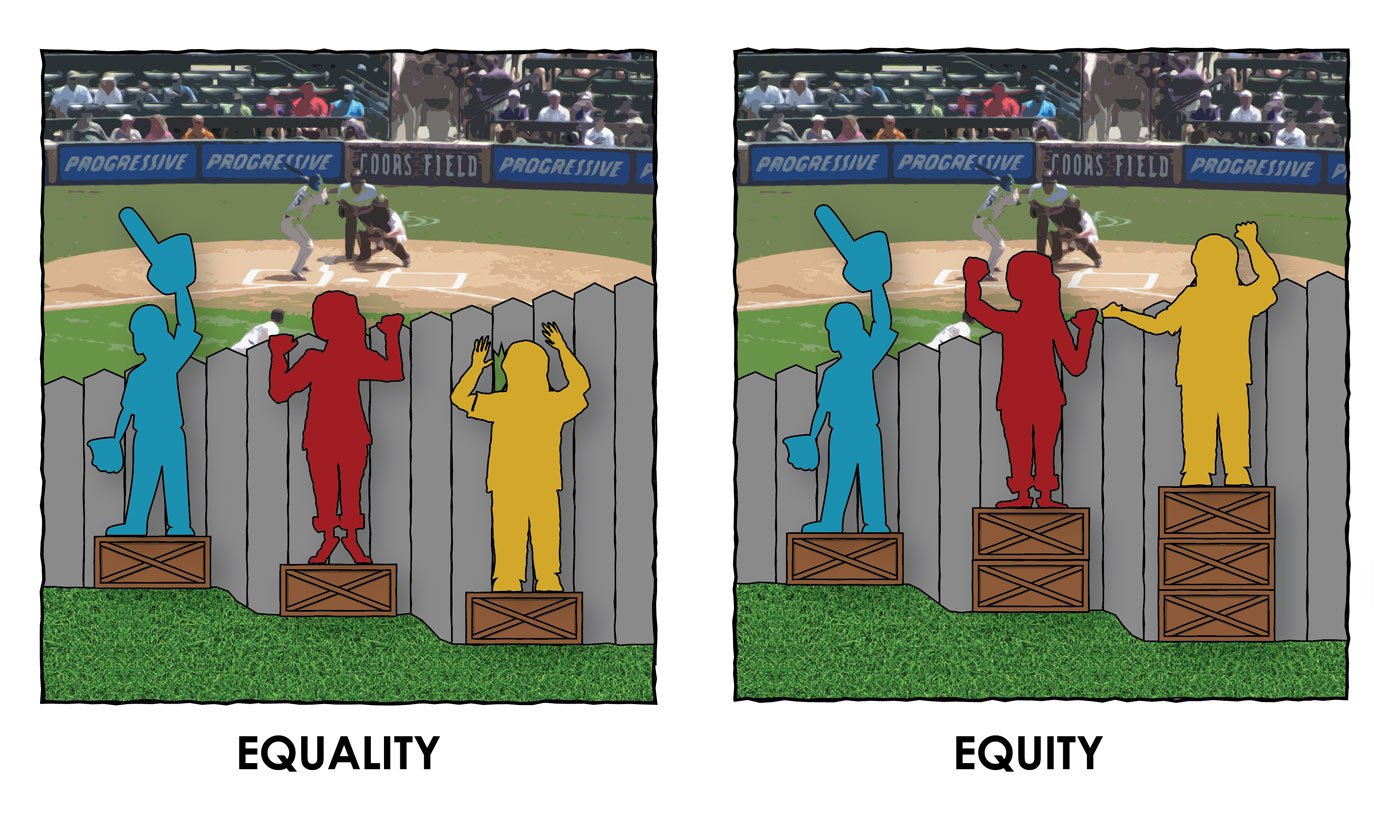
Create an Equitable School Community
“When a flower doesn’t bloom, you fix the environment in which it grows, not the flower.” – Alexander Den Heijer
What is this best practice area? Link to this section
An equitable school community supports each and every student and their families to receive the resources that they need, when they need them, and in a way that increases everyone feeling welcomed and valued.
An equitable school community recognizes, lifts up and responds to a wide range of cultural and social norms and expectations, goals, values, interpersonal relationships, and forms of leadership. School communities would benefit from developing an understanding of students’ cultural backgrounds and values through conversations, engagement, and partnership with families.
We cannot talk about equity without talking about race and the harmful white ideals of the U.S.'s dominant culture. True equity is dismantling the systems and structures that exist in the U.S., resulting in the oppression of our Black and Brown students. According to the National Equity Project, "as leaders for equity, we have to examine, unpack and mitigate our own biases and dismantle the policies and structures that hold inequity in place." They call this "leading from the inside-out."
Make this Best Practice Area Come to Life Link to this section
1. Be aware of your biases and use that awareness to shift your practice Link to this section
2. Use an asset-based lens Link to this section
3. Create a validating and affirming learning environment for all students using family input Link to this section
Be Aware of Your Biases and Use that Awareness to Shift Your Practice Link to this section
The work of creating an equitable school community begins with self-reflection. It is especially important that we, as SFUSD staff, reflect on our biases.
To be human is to have biases. Biases are not inherently good or bad. Biases are mental shortcuts; they help us think quickly about things, make decisions, and respond to our environments. For example, people might have biases towards or against certain foods because of past experiences, which then determines whether folks will choose to eat a lot of that food or stay away from that food in the future.
Biases can become dangerous, however, when we allow them to (or if we are not aware of how they) dictate how we respond to groups of people based on socialized concepts such as race, class, gender, and sexuality.
For this reason, it is essential that all SFUSD staff are aware of their biases, both explicit and implicit, and use the ensuing awareness to shift their practice to create a welcoming and validating school environment for all students and families.
Use this tool to begin reflecting on both your explicit and implicit biases.
Note: This tool is great for an initial reflection on your biases. That being said, there is much to be gained from exploring your biases in community and conversation with others. This tool could be great pre-work for an all-staff meeting or before a professional development opportunity on family partnership.
Use an Asset-Based Lens
Link to this section
Deficit thinking is the most prevalent form of racism in education. When interacting with students and families, especially students and families who may show up differently than we do, it is important to maintain an asset-based lens by focusing on families and students' strengths.
We’ll start with an activity. Looking at the image below, what are all of the positive things you see in this image? What are all of the strengths you see in this photo?
Click here to view the image
What are all of the positive things you see in this image? What are all of the strengths you see in this photo?

Why do we use this activity?
Great, you found so many strengths!
We ask folks to participate in this activity for a fairly straightforward reason: it can be incredibly easy to get distracted and overwhelmed by the sort of “chaos” that this image depicts.
It’s more challenging to look at this image and find all of the strengths and the positives, and it’s typically not where most of our minds go first. Using a strengths-based lens is an active practice and one that is essential to effectively partnering with our families.
In addition, all of our families are different and show up in very different ways. Simply because they show up in a way that doesn’t feel “normal” to us, doesn’t mean there is anything wrong or dysfunctional with that family. Rather, it often means there are so many strengths there that are simply going unseen and unacknowledged.
Finally, this image and our responses to it really highlight the various assumptions we all make. Often we’ll have folks say things like “Oh the son is so happy to see his father or grandfather which means that there’s love and caring…” but, evidently that is an assumption. For all we know, that person could be the handyman or the plumber or any member of the extended family.
Similarly, we often make the assumption that this static image depicts this families’ “eternal reality”; however, we also know that families are dynamic and on-the-move, and who knows what happened in the moments leading up to this image!
Again, there are so many ways to be a family, and it’s really important that we continuously check our assumptions, and seek out strengths and assets, especially as it relates to identity and family make-up.
Create a Validating and Affirming Learning Environment for All Students Using Family Input Link to this section
Creating a validating and affirming learning environment for all students using family input is a huge piece of what it means to create an equitable school community that responds to each and every students' needs.
Use this tool to reflect on who is in your school's community, what your students might need to be most successful, and how you can better meet those needs.
More Equity Resources Link to this section
“In an equitable education system, every student has access to the resources and educational rigor they need at the right moment in their education, irrespective of race, ethnicity, gender, sexual orientation, language, disability, family background, family income, citizenship or tribal status. Equity is not just about resource allocation, however. While there is a need for additional resources to allow schools serving students of color to provide rich educational experiences, merely ensuring more equitable resource allocation won’t ensure that schools are affirming of students’ background and cultural and linguistic heritage.” -The Aspen Institute (2018)
VIDEO:
This is Equity. YouTube video by Californians Dedicated to Education Foundation
- California students have big dreams. Unfortunately, some students face a much tougher road to achieve them. It's up to us to remove barriers in the education system that get in their way.
- Developed by the Alliance for Continuous Improvement, "This is Equity" provides a concise, compelling way for local educators, families, students and community groups to help engage with their schools and districts in important conversations to better understand and meet the needs of every student. #ThisIsEquity
Equity vs. Equality:
It is important to know the difference between equality and equity. Some students need different or more support and resources than others, often due to structural inequities. Similarly, ALL students need to have their identities affirmed and valued.

From Paul Kuttner’s “The problem with that equity vs. equality graphic you’re using”
Other District Resources Link to this section
SFUSD Office of Equity: https://www.sfusd.edu/equity-and-title-ix-office-recourses
This page was last updated on February 27, 2024

